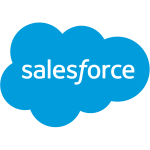Connect Azure Synapse Analytics to Salesforce

About Azure Synapse Analytics
Load and transform data to Synapse using ETL or extract data from Synapse to move to other destinations.
About Salesforce
Extract data from and load data into Salesforce to create your Customer 360 view. Do more with your Salesforce data.
Popular Use Cases
Bring all your Salesforce data to Amazon Redshift
Load your Salesforce data to Google BigQuery
ETL all your Salesforce data to Snowflake
Move your Salesforce data to MySQL
Azure Synapse Analytics's End Points
Azure Synapse Business Intelligence, Machine Learning, and Data Analytics
Azure Synapse Unified Analytics
Azure Synapse Cloud-Native HTAP Implementation
Azure Synapse Programming Language Compatibility
Azure Synapse Serverless On-Demand or Provisioned Resources
Azure Synapse Compatibility With Azure, Microsoft, and Open Data Initiative Services
Azure Synapse Workload Optimization
Azure Synapse Advanced Security and Privacy
Azure Synapse Compliance Certifications
Salesforce's End Points
Table of Contents
- Connect Salesforce for a single source of truth
- Migrate your Salesforce data in minutes
- Integrate.io has the Salesforce integrations you need
- How Integrate.io customers grow faster with Salesforce data connectors
- Get started analyzing your Salesforce data
- Why choose Integrate.io for your Salesforce integration?
- Explore our Salesforce ETL resources
Connect Salesforce for a single source of truth
Likewise, the Salesforce Sales Cloud allows your sales team to take action at precisely the right moment using AI-powered prompts. Yet, it's impossible for anyone to know the right moment to act unless you've historical trends and patterns to pull from.
Salesforce is innovative and powerful, but its functionality is only made possible with accurate, up-to-the-minute data, and that's where Integrate.io comes in. With Integrate.io, you can improve your email marketing campaigns, landing pages, segmentation strategies, and more by enriching your Salesforce account with all the data it needs.
Integrate.io makes it easy to:
- Send data into Salesforce from your customer support, sales, and order fulfillment tools.
- Pull data out of Salesforce for use in your business intelligence dashboards and other apps.
- Create a two-way data stream to ensure your business always has a consistent and cohesive big-picture view across all of its apps.
Migrate your Salesforce data in minutes
Integrate.io offers Salesforce data migration. Our native integration with Salesforce ensures speed, reliability, and security, allowing your business to stay on top of its digital marketing goals while optimizing its databases for activities like marketing automation.
With Integrate.io, you can:
- Use our low-code, drag-and-drop interface to configure your Salesforce integration in mere minutes.
- Easily feed data into Salesforce (like your Salesforce CRM) from anywhere or pull data out into other tools, like your cloud data warehouse.
- Connect your tech stack with hundreds of other apps using pre-built connectors that require little to no coding.
Integrate.io has the Salesforce Integrations You Need
- Bring all your Salesforce data to Amazon Redshift
- Load your Salesforce data to Google BigQuery
- ETL all your Salesforce data to Snowflake
- Migrate your Salesforce data to MySQL
How Integrate.io Customers Grow Faster with Salesforce Data Connectors
Integrate.io can help you migrate Salesforce data out of your silo so that you can strengthen your analytics, enrich your business intelligence dashboards, and get more out of the critical insights that lay hidden in your Salesforce account.
Get started analyzing your Salesforce data
Integrate.io makes it easy to condense your company's countless data streams into a single source of truth by providing a simplified extract, transform, load (ETL) pipeline. In a matter of minutes, you can get Salesforce connected to your stack. That means having peace of mind of knowing that data is flowing seamlessly between all of your apps, exactly when and where you need it the most.
Why choose Integrate.io for your Salesforce integration?
Using Integrate.io, your business can unlock:
- A simplified ETL pipeline that scales with your business.
- A helpful support team and troubleshooting guides.
- Hundreds of integrations with your favorite apps.
Explore our Salesforce ETL resources
Integrate Azure Synapse Analytics With Salesforce Today
The no-code pipeline platform for
your entire data journey
TRY IT FREE FOR 14-DAYS

Integrates With
Get Started On Your
Data Integration Today
Powers your company decision making
and operational systems with our one-stop
ETL and data integration platforms
TRY IT FREE FOR 14-DAYS










